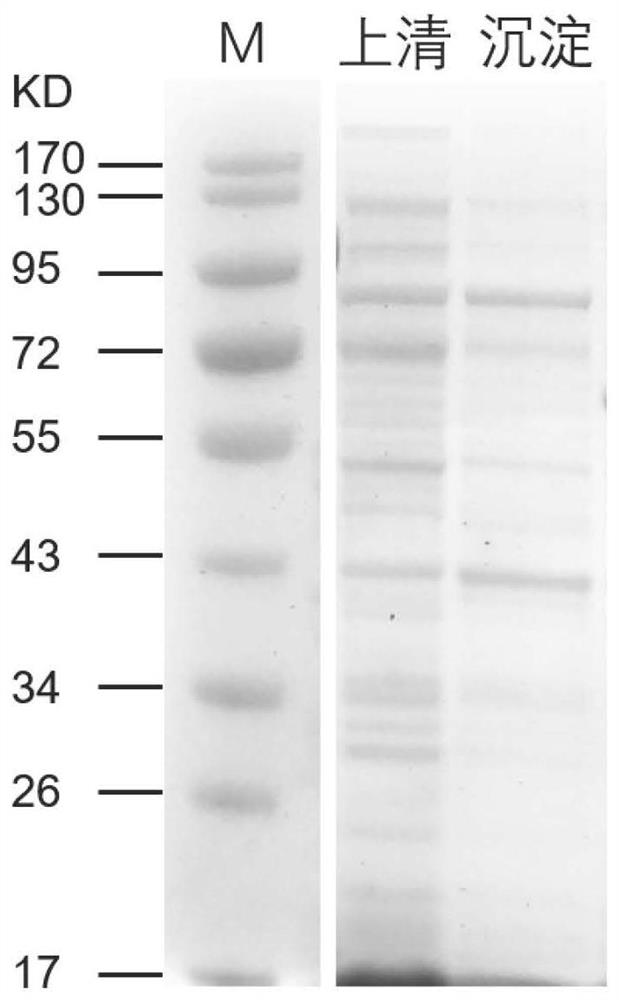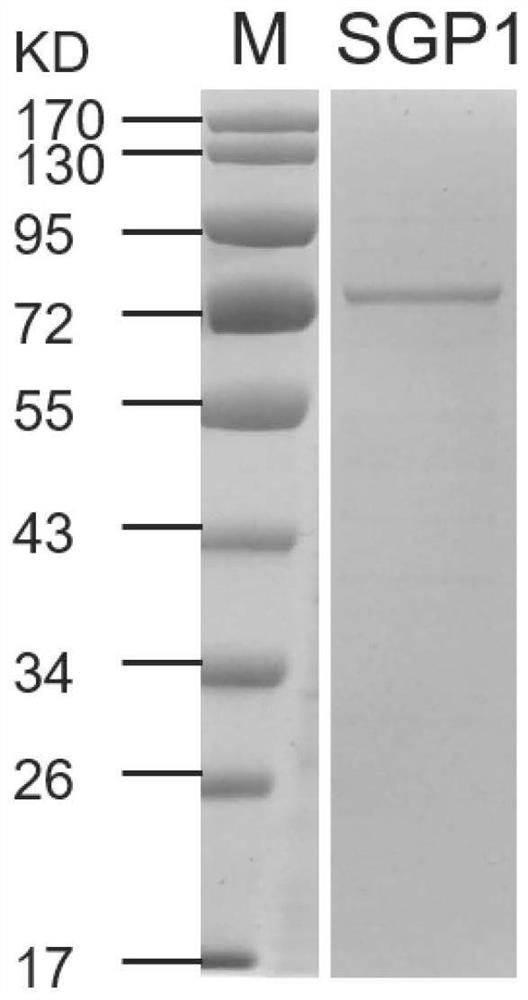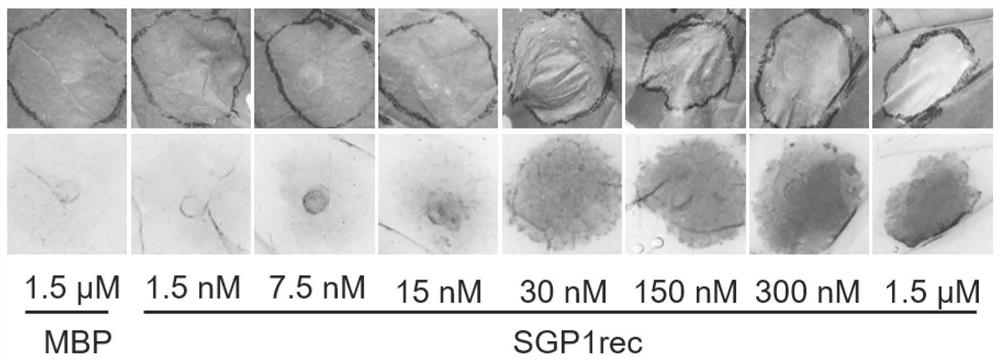Ustilaginoidea virens elicitor protein SGP1, oligopeptide and application thereof
An elicitor, rice koji fungus technology, applied in the field of bioengineering, can solve the problem of less PAMP molecules, and achieve the effects of improving disease resistance, enhancing plant resistance to pathogen infection, and having broad application prospects
- Summary
- Abstract
- Description
- Claims
- Application Information
AI Technical Summary
Problems solved by technology
Method used
Image
Examples
Embodiment 1
[0055] Example 1 Prokaryotic expression and purification of SGP1 protein
[0056] The protein elicitor SGP1 disclosed in this embodiment, its nucleotide sequence is shown in SEQ ID NO:1 in the sequence listing, and its amino acid sequence is shown in SEQ ID NO:2.
[0057] (1) Identification of SGP1 protein elicitor
[0058] According to the principle that the protein secreted by pathogenic bacteria can be recognized by plants to induce plant immune response, the laboratory collects the liquid culture solution of Aspergillus oryzae, extracts the protein, and sends the extracted protein to the company for mass spectrometry sequencing, and then analyzes it through bioinformatics Determining the secretome of Aspergillus oryzae. Proteins containing signal peptides, containing conserved domains, and present in pathogenic bacteria but not in plants were identified as candidate proteins. The coding sequences of 79 candidate proteins were respectively constructed on the plant transie...
Embodiment 2
[0068] Example 2 SGP1 Induces Plant Defense Response
[0069] (1) To induce tobacco allergic reaction
[0070] Adjust the SGP1 protein concentration to 1.5 nM, 7.5 nM, 15 nM, 30 nM, 150 nM, 300 nM, 1.5 μM. Select Nicotiana benthamiana about 4 weeks old, inject SGP1 recombinant protein from the back of Nicotiana benthamiana leaves into Nicotiana benthamiana leaves with a 1ml syringe without a needle, and at the same time, 1.5μM MBP is used as a control, and the allergic reaction is observed 48 hours after injection necrotic reaction. At the same time, after the leaves were photographed, placental blue staining was performed for observation.
[0071] Results: The protein at a concentration above 30nM can induce allergic cell death visible to the naked eye on Nicotiana benthamiana; placental blue staining stains the allergic reaction site blue, as shown in image 3 shown.
[0072] (2) Inducing ROS production in tobacco leaves
[0073] 1μM of SGP1 protein was injected into th...
Embodiment 3
[0088] Example 3 SGP1 induces disease resistance in tobacco and rice
[0089] (1) To induce the resistance of tobacco to Phytophthora nicotianae
[0090] After spraying the SGP1 recombinant protein and mock on the leaves of Nicotiana benthamiana for 24 hours, inoculate 100 zoospores of Phytophthora nicotiana for 48 hours, and count the diameter of the lesion.
[0091] Results: After SGP1 recombinant protein treated Nicotiana benthamiana leaves, the lesion diameter could be reduced by about 0.9 cm, which indicated that SGP1 recombinant protein could induce the resistance of Nicotiana benthamiana to Phytophthora nicotianae, such as Figure 6 shown.
[0092] (2) Inducing rice resistance to blast fungus
[0093] After spraying SGP1 recombinant protein and mock on rice leaves for 24 hours, inoculate the spore liquid of Magnaporthe oryzae (5×10 4 spores / mL), after 7 days of moisturizing culture at 28°C, count the number of five types of lesions. Type 1, pinhead-sized brown spots...
PUM
 Login to View More
Login to View More Abstract
Description
Claims
Application Information
 Login to View More
Login to View More - R&D
- Intellectual Property
- Life Sciences
- Materials
- Tech Scout
- Unparalleled Data Quality
- Higher Quality Content
- 60% Fewer Hallucinations
Browse by: Latest US Patents, China's latest patents, Technical Efficacy Thesaurus, Application Domain, Technology Topic, Popular Technical Reports.
© 2025 PatSnap. All rights reserved.Legal|Privacy policy|Modern Slavery Act Transparency Statement|Sitemap|About US| Contact US: help@patsnap.com



